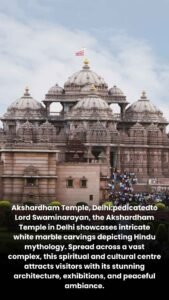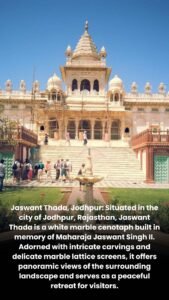India’s rich cultural heritage and architectural marvels epitomize the nation’s diverse history and traditions. Among the plethora of wonders that adorn the Indian landscape, white marble monuments stand out as emblematic symbols of timeless beauty and historical significance.
The use of white marble in Indian architecture dates back centuries, showcasing the craftsmanship and artistic prowess of ancient Indian artisans. This pristine material has been utilized to construct some of the most iconic monuments that have captivated the world with their grandeur and elegance.
One such masterpiece is the Taj Mahal, an architectural jewel that epitomizes love and devotion. Built by the Mughal emperor Shah Jahan in memory of his beloved wife Mumtaz Mahal, the Taj Mahal is renowned for its symmetrical design, intricate marble inlay work, and ethereal white marble facade that glows in the sunlight. Its sheer magnificence has earned it the status of a UNESCO World Heritage Site and continues to attract millions of visitors from across the globe.
Beyond the Taj Mahal, India boasts an array of other white marble marvels that showcase the country’s rich architectural heritage. The stunning Dilwara Temples in Rajasthan, known for their intricate marble carvings and exquisite architecture, stand as a testament to the craftsmanship of ancient Indian artisans. Similarly, the breathtaking Ranakpur Jain Temple, with its 1444 intricately carved marble pillars, is a sight to behold, drawing pilgrims and tourists alike.
Here are five iconic white marble monuments that you must visit when exploring India:
1. Taj Mahal, Agra
Undoubtedly the most famous white marble monument in India, the Taj Mahal is a UNESCO World Heritage Site and one of the Seven Wonders of the World. Built by Emperor Shah Jahan in memory of his beloved wife Mumtaz Mahal, this exquisite mausoleum is a masterpiece of Mughal architecture. Its intricate marble carvings, delicate inlay work, and symmetrical gardens make it a symbol of eternal love and a must-visit destination for travelers. The Taj Mahal’s white marble facade gleams in the sunlight, reflecting the changing hues of the day, and its majestic domes and minarets create a silhouette that has become synonymous with India’s cultural identity. Beyond its architectural beauty, the Taj Mahal holds deep historical and cultural significance, serving as a testament to the rich heritage of the Mughal Empire and the enduring power of love. Each year, millions of visitors flock to Agra to marvel at this iconic monument, ensuring that the legacy of the Taj Mahal continues to enchant and inspire generations to come.
2. Dilwara Temples, Mount Abu
Nestled amidst the verdant hills of Mount Abu in Rajasthan, the Dilwara Temples stand as a testament to the exquisite craftsmanship of ancient artisans. Constructed between the 11th and 13th centuries by the Chalukya dynasty rulers, these temples are dedicated to Jain Tirthankaras, embodying the principles of Jainism. The Dilwara Temples are renowned for their breathtaking white marble architecture, characterized by intricate carvings, majestic domes, and ornate pillars adorned with elaborate designs. Each temple within the complex exudes a unique charm, reflecting the rich cultural heritage and spiritual significance of Jainism. Visitors are spellbound by the intricate details of the marble carvings, which depict scenes from Jain mythology and showcase the mastery of the craftsmen of yore. Surrounded by serene natural beauty, the Dilwara Temples offer a tranquil sanctuary for contemplation and reverence, attracting pilgrims and tourists alike to marvel at their timeless beauty and architectural splendor.
3. Akshardham Temple, Delhi
Standing as a modern marvel amidst the bustling cityscape of Delhi, the Akshardham Temple, also known as the Swaminarayan Akshardham Temple, is a monumental tribute to traditional Indian craftsmanship and spirituality. Erected in 2005, this grand temple complex represents a fusion of ancient architectural techniques and contemporary design principles. Crafted entirely from pristine white marble, the Akshardham Temple captivates visitors with its intricate carvings, imposing domes, and sprawling gardens that evoke a sense of serenity and tranquility. The temple complex is not merely a place of worship but also a cultural oasis, featuring exhibitions, musical fountain shows, and educational displays that celebrate India’s rich cultural heritage and spiritual legacy. As visitors traverse through the ornate corridors and marvel at the intricately sculpted facades, they are immersed in a journey of enlightenment and introspection. The Akshardham Temple serves as a beacon of spiritual enlightenment and cultural pride, welcoming visitors from across the globe to experience the timeless beauty and profound wisdom encapsulated within its sacred walls.
4. Ranakpur Jain Temple, Rajasthan
Perched amidst the idyllic surroundings of the village of Ranakpur in Rajasthan, the Ranakpur Jain Temple stands as a sublime testament to the architectural brilliance of ancient India. Constructed in the 15th century, this revered temple is dedicated to Adinatha, the first Tirthankara of Jainism, and serves as a sanctuary of spiritual devotion and artistic splendor. Renowned for its awe-inspiring white marble architecture and intricate sculptures, the Ranakpur Jain Temple enthralls visitors with its timeless elegance and sacred aura. The temple’s pièce de résistance is its remarkable collection of 1,444 intricately carved marble pillars, each adorned with exquisite designs that showcase the boundless creativity and skill of the craftsmen of yore. As sunlight filters through the intricately carved windows, casting ethereal patterns of light and shadow, the temple radiates an otherworldly beauty that transcends time and space. The Ranakpur Jain Temple stands as a living testament to the enduring legacy of Jainism and serves as a beacon of spiritual enlightenment for pilgrims and visitors alike, offering a glimpse into the rich tapestry of India’s cultural and religious heritage.
5. Victoria Memorial, Kolkata
Nestled amidst the vibrant cityscape of Kolkata, West Bengal, the Victoria Memorial stands as an iconic symbol of the city’s rich colonial heritage and cultural legacy. Built in honor of Queen Victoria, this majestic white marble monument exudes grandeur and elegance, blending seamlessly the architectural styles of Mughal and British influences. The Victoria Memorial serves not only as a memorial to the illustrious monarch but also as a repository of India’s colonial history and cultural heritage. Housing a meticulously curated museum, the memorial showcases a rich collection of artifacts, paintings, and exhibits that offer a fascinating insight into India’s colonial past. Surrounded by sprawling gardens, serene lakes, and picturesque pathways, the Victoria Memorial provides a tranquil retreat amidst the hustle and bustle of urban life, inviting visitors to immerse themselves in the beauty of its surroundings. As the sun sets over the horizon, casting a golden glow upon its gleaming marble facade, the Victoria Memorial stands as a timeless tribute to Kolkata’s enduring spirit and cultural diversity, beckoning travelers from far and wide to experience its majestic allure and historical significance.
These five iconic white marble monuments are not only architectural marvels but also symbols of India’s rich history and cultural heritage. Visiting these sites offers a glimpse into the country’s glorious past and its enduring legacy of craftsmanship and artistry.
FAQs about 5 Iconic White Marble Monuments to Visit in India:
1. What is the Taj Mahal? The Taj Mahal is a white marble mausoleum located in Agra, India. It was built by Emperor Shah Jahan in memory of his wife Mumtaz Mahal and is one of the most famous landmarks in the world.
2. Where are the Dilwara Temples located? The Dilwara Temples are located in Mount Abu, Rajasthan, India. They are renowned for their stunning white marble architecture and intricate craftsmanship.
3. Who built the Akshardham Temple in Delhi? The Akshardham Temple, also known as the Swaminarayan Akshardham Temple, was built in 2005 in Delhi, India. It showcases traditional Indian craftsmanship and architecture.
4. What is unique about the Ranakpur Jain Temple? The Ranakpur Jain Temple, situated in Rajasthan, India, is known for its 1,444 intricately carved marble pillars, each unique in design. It is dedicated to Adinatha, the first Tirthankara of Jainism.
5. What is the Victoria Memorial in Kolkata? The Victoria Memorial is a majestic white marble monument located in Kolkata, West Bengal, India. It was built in memory of Queen Victoria and houses a museum showcasing India’s colonial history.
6. Are these monuments open to the public? Yes, all of these iconic white marble monuments are open to the public for visitation.
7. Can visitors take photographs inside these monuments? Photography policies vary for each monument. Visitors are advised to check with the respective authorities regarding photography permissions.
8. Are there guided tours available for these monuments? Yes, guided tours are often available at these monuments, providing visitors with insights into their history, architecture, and significance.
9. How much time should I allocate for visiting each monument? The time required to visit each monument varies. Generally, plan to spend a few hours exploring the grounds and appreciating the architecture and historical significance.
10. Are there entry fees for these monuments? Entry fees may apply for some of these monuments, especially for foreign tourists. It’s recommended to check the current entry fees before planning a visit.
11. Are there specific dress codes to follow when visiting these monuments? Some monuments may have dress codes, particularly those with religious significance. Visitors are advised to dress modestly, covering their shoulders and knees, when visiting religious sites.
12. Are there restrictions on bringing bags or luggage inside these monuments? To ensure the safety and preservation of the monuments, there may be restrictions on bringing large bags or luggage inside. It’s advisable to carry minimal belongings and check with the authorities beforehand.
13. Are these monuments wheelchair accessible? Accessibility features vary for each monument. Some may have ramps and other facilities to accommodate visitors with mobility impairments. It’s recommended to inquire about accessibility options in advance.
14. Can I purchase souvenirs or gifts at these monuments? Many of these monuments have souvenir shops or stalls where visitors can purchase mementos, gifts, and handicrafts.
15. Are there nearby dining options available? Depending on the location, there may be dining options available near these monuments, ranging from street food vendors to restaurants offering local cuisine.
16. Can I visit these monuments at night? Nighttime visitation policies vary for each monument. Some may offer special evening tours or events, while others may have restricted hours. Check with the respective authorities for nighttime visitation options.
17. Can I visit these monuments during festivals or special occasions? Visiting these monuments during festivals or special occasions can offer a unique cultural experience. However, it’s advisable to plan ahead as these times may attract larger crowds.
18. Are there audio guides available for self-guided tours? Some monuments may offer audio guides for self-guided tours, providing commentary in multiple languages to enhance the visitor experience.
19. Can I hire a local guide for a more immersive experience? Hiring a local guide can enhance your understanding of the monuments’ history, architecture, and cultural significance. Guides often offer personalized insights and anecdotes.
20. Are these monuments suitable for children and families? Yes, these monuments offer educational and enriching experiences for visitors of all ages. Families with children can explore the grounds, learn about history, and appreciate the beauty of these iconic monuments together.
Register for My Upcoming Masterclass HERE
See You in the Live Masterclass
Sunil Chaudhary stands as a preeminent global Leading digital coach, boasting a diverse clientele hailing from over 50 nations. Renowned for his prowess as an exemplary SEO expert, business automation coach, and landing page authority, Chaudhary also holds the distinction of being esteemed as the finest business coach in India. Beyond technical domains, he imparts invaluable insights into mindset, success, and life skills, thus encompassing a holistic approach to mentorship.
Join FREE Courses HERE
Know The Author:
 Sunil Chaudhary aka Suniltams Guruji is India’s Leading Digital Coach. He provides complete Digital Skill Development Coaching with great support. Sunil has trained more than 25000 students and helped more than 1100 businesses so far. Sunil is a well-known face across the world for Digital Coaching.
Sunil Chaudhary aka Suniltams Guruji is India’s Leading Digital Coach. He provides complete Digital Skill Development Coaching with great support. Sunil has trained more than 25000 students and helped more than 1100 businesses so far. Sunil is a well-known face across the world for Digital Coaching.
Digital Success Coach | Best SEO Coach India | Mindset Coach | Life Success Coach
Related posts:
 Shri Hanuman Garhi Mandir – Ayodhya, Uttar Pradesh
Shri Hanuman Garhi Mandir – Ayodhya, Uttar Pradesh
 Welcome to Shri Nageshwar Nath Mandir Ayodhya Trust!
Welcome to Shri Nageshwar Nath Mandir Ayodhya Trust!
 Welcome to Ayodhya Mandir राम!
Welcome to Ayodhya Mandir राम!
 “From the ancient streets of Baku’s Old City to the fiery Yanar Dag, here are 5 amazing places you should definitely see when you visit Azerbaijan!”
“From the ancient streets of Baku’s Old City to the fiery Yanar Dag, here are 5 amazing places you should definitely see when you visit Azerbaijan!”
 Discovering Minicoy: Lakshadweep’s Hidden Gem
Discovering Minicoy: Lakshadweep’s Hidden Gem
 Kadmath Chronicles: Unveiling the Marine Marvels
Kadmath Chronicles: Unveiling the Marine Marvels
 Kalpeni – A Tranquil Oasis in Lakshadweep
Kalpeni – A Tranquil Oasis in Lakshadweep
 Bangaram: Lakshadweep’s Stunning Coral Atoll
Bangaram: Lakshadweep’s Stunning Coral Atoll
 Japan introduces e-Visa for Indian tourists: Top 5 places to visit in the island country
Japan introduces e-Visa for Indian tourists: Top 5 places to visit in the island country









